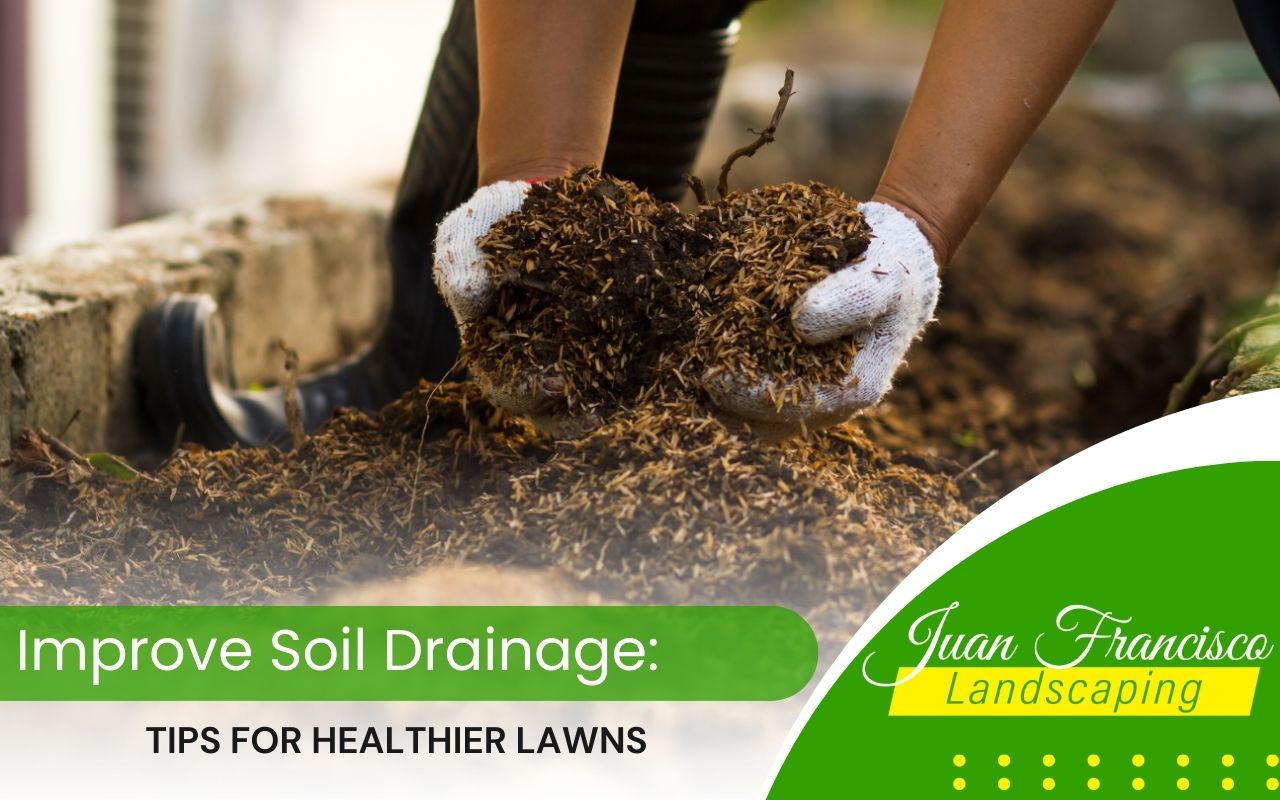
Improve Soil Drainage: Tips for Healthier Lawns
Improved soil drainage might be the solution if your lawn is prone to waterlogging or you’re struggling with muddy patches after rainfall. In Knoxville, our clay-heavy soil can often retain too much water, resulting in poor turf growth and increased water-related lawn problems. With a few simple adjustments, you can create a lawn that drains properly and remains healthy throughout the seasons.
Why Improving Soil Drainage Matters
The Role of Soil in Lawn Health
Soil is the foundation of your lawn. It’s not just about the grass itself—it’s about how water moves through the soil to the roots. When water accumulates on the surface and doesn’t drain properly, it prevents oxygen from reaching the roots, leading to poor grass growth and even root rot. Improving your soil drainage is essential to avoid these issues and maintain a thriving lawn.
How to Improve Soil Drainage Naturally
Improving soil drainage doesn’t always require expensive equipment or techniques. Here are a few natural methods you can use to help water flow better through your soil:
- Adding Organic Matter: Mixing organic compost into your soil enhances its structure, allowing it to absorb and retain water more effectively. It also helps break up clay-heavy soil, making it easier for water to move through.
- Topdressing: Applying a layer of compost or sand to the surface of your lawn and raking it into the soil helps improve drainage over time. This technique adds nutrients while enhancing the soil’s ability to shed water.
- Planting Deep-Rooted Plants: Certain plants, such as native grasses and shrubs, have deep roots that help naturally break up compacted soil, allowing water to flow more freely.
Eco-Friendly Ways to Improve Soil Drainage
Sustainable Practices for Better Lawn Care
In addition to improving soil drainage, adopting eco-friendly practices can enhance your lawn’s overall health. Here’s how:
– Mulching: Mulch is an excellent material for retaining moisture and improving soil drainage. Use organic mulch, such as wood chips or straw, to reduce water runoff and maintain moisture levels during dry spells.
– Rain Gardens: Installing a rain garden is an effective way to manage excess water while helping improve soil drainage. A rain garden captures runoff and allows it to filter into the soil, preventing erosion and waterlogging slowly.
– Rainwater Harvesting: Collecting rainwater from your roof with a rain barrel is an eco-friendly way to conserve water and allows you to use collected water for lawn irrigation, further improving soil moisture levels.
Signs Your Lawn Needs Better Drainage
Identifying Drainage Problems Early
Recognizing the signs of poor soil drainage early on can help prevent long-term damage to your lawn. Look out for:
- Water Pooling: Areas where water collects and stays for hours or even days are prime indicators that your soil drainage needs improvement.
- Yellowing Grass: If your grass turns yellow or starts to wilt, it may be a sign that the roots are not getting enough oxygen due to poor drainage.
- Soggy Soil: Persistent sogginess after rainfall suggests that soil is compacted or too dense to allow proper water flow.
Let Us Help You Improve Your Lawn’s Drainage
Improving soil drainage is key to a healthy, thriving lawn. At Juan Francisco Landscaping, we’re experts in soil care and drainage solutions for Knoxville residents. If you’re experiencing water retention or drainage issues, don’t hesitate to contact us today at (865) 455-3964 to schedule a consultation. Together, we can create the perfect solution for your lawn.
